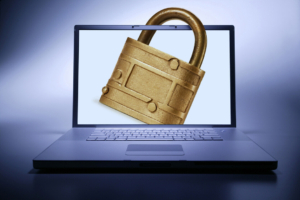Here’s Why You Need Identity, Privacy, and Device Protection
People are often anxious about the security of their personal information and online accounts. Cybercriminals are finding new ways to invade your privacy which is why you need comprehensive protection to keep you safe online.
 We spend a lot of time on this blog discussing SMB security. However “all security is personal”, even at the enterprise level. That’s because it’s people who implement security, monitor it and react to vulnerabilities. Therefore if those people are lax in their own personal security, how are they going to do their jobs effectively?
We spend a lot of time on this blog discussing SMB security. However “all security is personal”, even at the enterprise level. That’s because it’s people who implement security, monitor it and react to vulnerabilities. Therefore if those people are lax in their own personal security, how are they going to do their jobs effectively?
Here are some protection and privacy best practices that you can use to keep your identity and sensitive information away from prying eyes and restore your faith in technology.
Device Protection
Device protection refers to the measures you take to protect your hardware or physical devices from intruders and potentially harmful software, such as malware, adware, and viruses.
Protect Your Hardware
Knowing where your smartphones, computers, iPads, and gaming consoles are and never allowing people you don’t know to use them are the first steps in protecting them.
Ensure that you protect your devices with a password to ensure that your photos, banking apps, and text messages stored on them are inaccessible if you lose your phone at a concert or leave your tablet in a restaurant.
It’s also a good idea to back up your files regularly so that your images, videos, and documents are lost if your phone is stolen.
Protection Against Malicious Software
To keep your device safe, you’ll also have to protect it from software threats. There are many ways for malware and viruses to get onto your devices, including phishing scams, suspicious websites, questionable downloads, and clicking on advertisements.
When browsing sites that seem unreliable, use caution, and apply common sense when clicking on links.
You can also download a reliable antivirus software application to help detect, identify, and remove malware and viruses that could pose a threat to your online security.
Privacy Protection
Protecting your privacy involves preventing advertisers, fraudsters, and other unscrupulous organizations from obtaining access to the information you’d prefer to keep private.
It only takes a few careful modifications to your regular browsing, emailing, and social media activities to increase your internet privacy.
Limit What You Share on Social Media
Consider your usage of social media. Do you upload pictures containing information that could be used to identify you? Examples of information that you shouldn’t share online include your:
- Full name
- Birthday
- Physical address
- Current location
If your profile is freely accessible and anyone can view it, you might want to think about limiting what you post online. Sadly, although your loved ones may like reading your status posts, cybercriminals enjoy them even more.
Fraudsters can learn enough about you in just a few minutes of spying to pass themselves off as you or to target you. Restrict the information you post on social media and restrict the number of people you follow and befriend to those you actually know.
Use a VPN
Connecting to a virtual private network (VPN) is another great way to protect your online privacy. By encrypting your connection and keeping your location hidden, a VPN enables you to browse the internet anonymously.
Protecting your privacy with a VPN is essential when using public Wi-Fi at a library, restaurant, or coffee shop.
This is because cyber criminals typically wait around unprotected Wi-Fi networks to spy on users making online purchases or paying bills to gain access to their login information.
Keep up with the latest developments, and if a corporation that stores your information is the target of a cyberattack, take swift action to protect your identity and safeguard your account.
Here are some examples of identity theft:
1. Forging an Identity
The most frequent form of identity theft is when a thief takes a victim’s Social Security number and uses it to create a new false identity.
2. Creating New Accounts Using Someone Else’s Credentials
When a scammer successfully obtains financial data and personally identifiable information from a user, they can open new accounts such as utility accounts, credit cards, and more using the victim’s good credit rating.
3. Taking Over Someone Else’s Account
Account takeover occurs when a fraudster takes the victim’s account login information and adds themselves as authorized parties, giving them access to the victim’s banking facilities.
Fortunately, this type of fraudulent activity is steadily decreasing due to the widespread use of EMV chip readers.
4. Medical Identity Theft
Medical identity theft occurs when fraudsters pose as patients to access certain prescribed drugs and have their medical care covered by the victim.
5. Corporate Identity Theft
Corporate identity fraud occurs when a criminal tries to issue new lines of credit in the name of a company, sends clients fake bills, and then takes the payments themselves. This type of identity theft is most common in small businesses.
A cybercriminal may still manage to obtain your personally identifiable information even when you follow all the rules.
When a security breach occurs at an establishment with your personal information, you’ll need to find another way to keep your information and banking accounts safe.
Investing in identity security software that monitors the dark web and notifies you of any suspicious activity that might point to identity theft is a good idea.
Considering how many ways there are to target users online, it should come as no surprise that many are uneasy about their safety when surfing the net.
Fortunately, you can safeguard your devices, protect your identity, and keep your browsing history away from prying eyes by installing reliable antivirus software.

 You definitely don’t want anyone taking control of your screen or sharing information with the group. Thankfully, you can restrict this by controlling screen sharing.
You definitely don’t want anyone taking control of your screen or sharing information with the group. Thankfully, you can restrict this by controlling screen sharing.  You can’t deny that this technology is very powerful for law enforcement, but it can also be used for things like stalking or harassment. There is also the fact that this technology allows almost anyone to scan anyone else. There are no laws controlling it, either.
You can’t deny that this technology is very powerful for law enforcement, but it can also be used for things like stalking or harassment. There is also the fact that this technology allows almost anyone to scan anyone else. There are no laws controlling it, either. Apps have “permissions,” meaning, they can access private information such as your social calendar stored on the phone, appointments, anything. Go to the
Apps have “permissions,” meaning, they can access private information such as your social calendar stored on the phone, appointments, anything. Go to the 





























